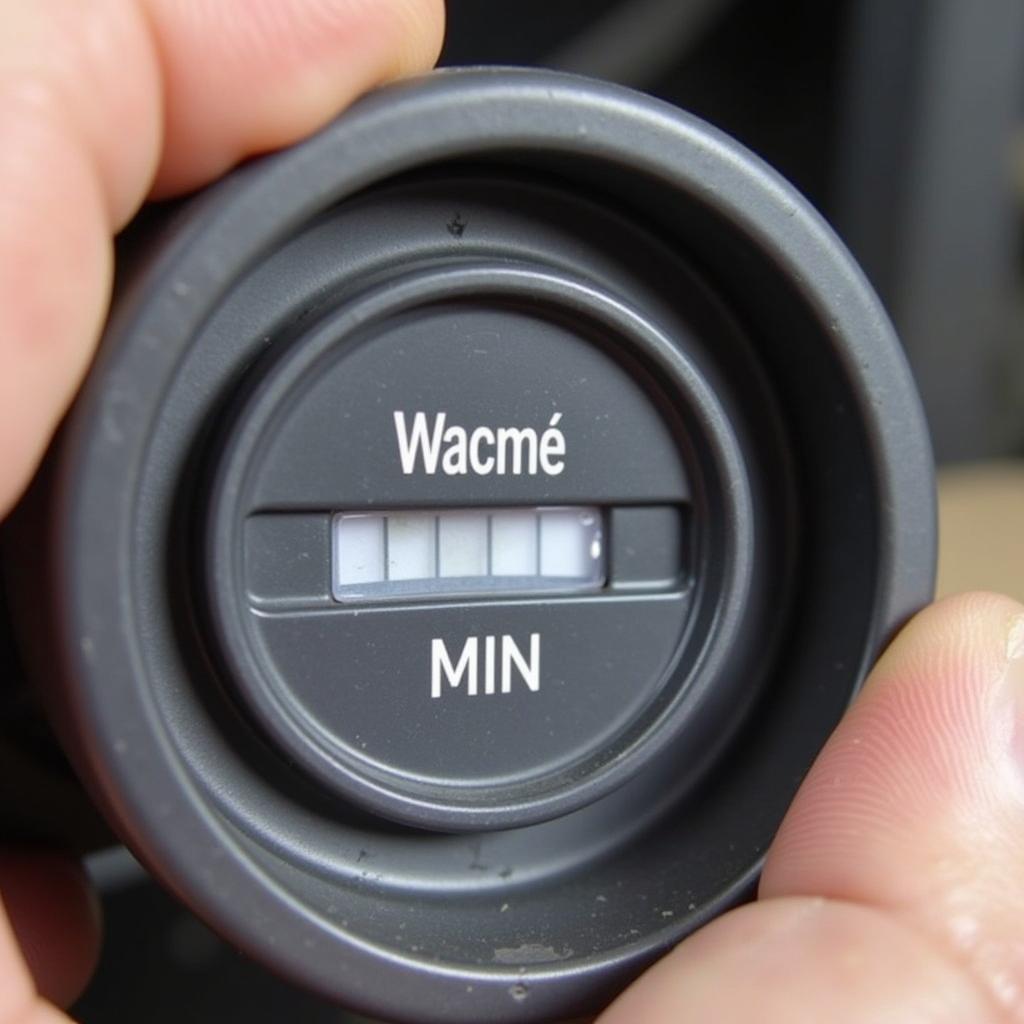Imagine this: you’re about to head out for the day, but your car refuses to start. The engine cranks, but nothing happens. You suspect a problem with the anti-theft system, but what does that even mean? An anti-theft examination might be the answer. This comprehensive inspection dives deep into your vehicle’s security system to diagnose and resolve any issues preventing you from hitting the road.
Understanding the Need for an Anti-Theft Examination
Modern vehicles are equipped with sophisticated anti-theft systems designed to deter thieves. While these systems are incredibly effective in protecting your car, they can sometimes malfunction, leading to frustrating starting problems or other electrical issues.
When is an Anti-Theft Examination Necessary?
Several signs indicate a potential problem with your car’s anti-theft system:
- Engine Cranks but Won’t Start: One of the most common symptoms is the engine turning over but refusing to fire up.
- Rapidly Flashing Security Light: A constantly blinking or illuminated security light on your dashboard is a telltale sign of a possible issue.
- Key Fob Malfunctions: If your key fob suddenly stops working, it might not be a battery issue. The anti-theft system might not be recognizing the signal.
- Alarm System Triggered Without Cause: If your car alarm goes off randomly without any apparent reason, it could indicate a fault within the anti-theft system.
What Causes Anti-Theft System Issues?
Anti-theft system problems can stem from a variety of factors, including:
- Faulty Wiring: Damaged or corroded wiring can disrupt communication between the various components of the anti-theft system.
- Malfunctioning Sensors: Sensors like door ajar switches or impact sensors can fail, sending false signals to the system.
- Dead Key Fob Battery: A dead key fob battery might seem trivial, but it can disrupt the immobilizer system, preventing the engine from starting.
- Software Glitches: Modern vehicles rely heavily on software, and a glitch in the anti-theft system’s software can lead to unexpected behavior.
The Anti-Theft Examination Process: A Step-by-Step Guide
An anti-theft examination involves a systematic approach to identify and rectify the root cause of the problem. Here’s a general outline of the process:
1. Visual Inspection
The first step is a thorough visual inspection of all visible components related to the anti-theft system, including:
- Wiring Harnesses: Technicians meticulously examine wiring harnesses for signs of damage, loose connections, or corrosion.
- Fuses and Relays: They check the relevant fuses and relays associated with the anti-theft system to ensure they are in working order.
- Key Fob: The key fob is inspected for physical damage and tested for proper signal transmission.
2. Diagnostic Scanning
Modern vehicles come equipped with onboard diagnostic systems (OBD-II). Technicians use specialized scanners to retrieve diagnostic trouble codes (DTCs) stored in the vehicle’s computer. These codes provide valuable clues about the specific areas of the anti-theft system experiencing issues.
3. Component Testing
Based on the DTCs and visual inspection, technicians proceed to test individual components of the anti-theft system, including:
- Immobilizer System: The immobilizer system, responsible for preventing unauthorized engine starting, is thoroughly tested.
- Alarm Control Unit: The alarm control unit, which receives signals from various sensors, is inspected for proper functioning.
- Sensors: Door ajar switches, hood switches, impact sensors, and other relevant sensors are tested for correct operation.
4. Software Update or Reprogramming
In some cases, a software glitch might be the culprit. Technicians can update the vehicle’s software to the latest version or reprogram the anti-theft system to resolve software-related issues.
5. Repair or Replacement
If a faulty component is identified during the examination, technicians will proceed with the necessary repairs or replacements. This might involve fixing damaged wiring, replacing faulty sensors, or installing a new alarm control unit.
Frequently Asked Questions about Anti-theft Examinations
Q: How much does an anti-theft examination cost?
A: The cost can vary depending on the complexity of the issue, the make and model of your vehicle, and labor rates at your chosen repair facility. It’s always a good idea to get a quote from a trusted mechanic specializing in automotive electronics.
Q: Can I perform an anti-theft examination myself?
A: While some DIY enthusiasts might be comfortable tackling basic car maintenance, an anti-theft examination often requires specialized tools, software, and knowledge. It’s generally recommended to have it performed by a qualified automotive electrician or mechanic with expertise in vehicle electronics and security systems.
Q: How long does an anti-theft examination take?
A: The duration of the examination depends on the nature of the problem. A simple issue like a blown fuse might be resolved quickly, while a more complex issue involving multiple faulty components could take several hours or even days to diagnose and repair.
Cardiagtech: Your Partner in Automotive Diagnostics
When facing car troubles, especially those involving intricate electronic systems like the anti-theft system, it’s crucial to seek assistance from experienced professionals. CARDIAGTECH provides top-notch diagnostic services and can help you get to the bottom of your car’s issues.
Do you need expert help with your vehicle’s anti-theft system or other electronic components? Contact Cardiagtech today! We offer a wide range of automotive diagnostic products and services to get you back on the road quickly and safely.

